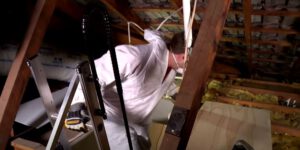 Roof insulation batts are a popular choice among Australians for their homes due to their effectiveness in maintaining optimal indoor temperatures, reducing energy costs, and promoting environmental sustainability. This article will guide you through a detailed, step-by-step process of installing roof insulation batts in your Australian home, covering topics from choosing the right insulation to maintenance and safety concerns.
Roof insulation batts are a popular choice among Australians for their homes due to their effectiveness in maintaining optimal indoor temperatures, reducing energy costs, and promoting environmental sustainability. This article will guide you through a detailed, step-by-step process of installing roof insulation batts in your Australian home, covering topics from choosing the right insulation to maintenance and safety concerns.
Understanding Roof Insulation Batts
Before delving into the installation process, let’s understand what roof insulation batts are and their benefits. Batts are pre-cut sections of insulation that can be made from various materials, including fiberglass, polyester, or wool. They are designed to fit between the joists in your roof and work by trapping pockets of air, creating a thermal barrier that prevents heat transfer, and helps maintain an ideal indoor temperature.
Insulation batts not only help to keep your home warm in winter and cool in summer but also contribute to reducing your energy costs. They can also provide soundproofing benefits and contribute to a more sustainable environment by reducing your reliance on heating and cooling systems.
Choosing the Right Insulation
There are several factors to consider when choosing the right insulation for your home. The choice can vary based on your geographical location, type of construction, and personal preferences. Australia has various climate zones, and accordingly, the Building Code of Australia recommends different insulation R-values (a measure of thermal resistance) for each zone.
Ensure you choose the insulation batts that meet the recommended R-values for your climate zone. Also, consider factors such as the product’s life cycle, environmental impact, fire resistance, and soundproofing capabilities. It’s best to consult with a professional to ensure you’re making the right choice.
Tools and Materials Required
Before you begin the installation process, gather all the necessary tools and materials. You’ll need:
- Insulation batts
- Utility knife
- Tape measure
- Stapler
- Safety gear including gloves, dust mask, and safety goggles
- Ladder
- Portable light (if the attic doesn’t have enough lighting)
- Installation Process
Step 1: Preparation
Before beginning, ensure the roof space is dry and clean. Any dampness or leaks could compromise the insulation’s effectiveness. Also, remove any old insulation if it’s damaged or ineffective. Ensure that you’re wearing appropriate safety gear to protect against dust and fiberglass particles.
Step 2: Measuring the Space
 Measure the distance between the joists and the depth of the space you’re insulating to determine how many batts you’ll need. The batts should fit snugly between the joists. If the batts are too small, they won’t insulate effectively, and if they’re too big, they could be compressed and lose their insulating properties.
Measure the distance between the joists and the depth of the space you’re insulating to determine how many batts you’ll need. The batts should fit snugly between the joists. If the batts are too small, they won’t insulate effectively, and if they’re too big, they could be compressed and lose their insulating properties.
Step 3: Cutting the Batts
Using a sharp utility knife, cut the batts to fit the space. It’s better to cut them a bit larger than your measurements to ensure a snug fit. Never compress the batts, as this can reduce their effectiveness.
Step 4: Placing the Batts
Start at the far end of the attic and work your way towards the entrance. This way, you won’t need to walk over the batts you’ve already installed. Carefully place the batts between the joists without leaving any gaps. Make sure the batts aren’t blocking any soffit vents to maintain proper attic ventilation.
Step 5: Insulating Around Obstacles
For areas around obstacles such as pipes or electrical boxes, cut smaller pieces of insulation batts and fit them around the obstacles. Ensure not to cover any light fixtures or other heat-generating objects that could potentially cause a fire.
After Installation Care
Once the installation is complete, regularly check your insulation for any signs of damage or dampness. If you find any wet insulation, it’s important to identify the source of moisture and rectify it before replacing the batts.
Safety Concerns
Safety is paramount when installing insulation batts. Always wear protective clothing, including a dust mask, goggles, and gloves, to protect yourself from insulation fibers. Be cautious of any electrical wiring, and never cover any heat-emitting devices as it could pose a fire hazard. If you’re not comfortable with the installation process, it’s advisable to hire a professional to ensure safe and efficient installation.
Conclusion
Installing roof insulation batts in your Australian home can greatly improve your comfort and reduce your energy costs. While the process might seem intimidating, with the right tools, materials, and a detailed guide, it is certainly manageable. Remember, it’s important to prioritize safety throughout the process and ensure the insulation is properly maintained post-installation for optimum effectiveness.

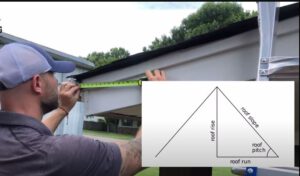 Choosing the right roof pitch is a crucial aspect of designing or renovating your Australian home. The pitch of your roof can significantly impact the aesthetic appeal, durability, and practicality of your home. But what factors should you consider, and how do these factors apply to the Australian context? Here’s a comprehensive guide to help you decide.
Choosing the right roof pitch is a crucial aspect of designing or renovating your Australian home. The pitch of your roof can significantly impact the aesthetic appeal, durability, and practicality of your home. But what factors should you consider, and how do these factors apply to the Australian context? Here’s a comprehensive guide to help you decide.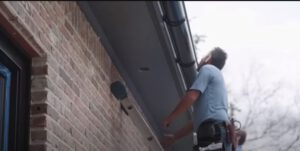 Gutters are one of the most important components in a roofing system, providing protection against water run-off and helping to prevent water damage. Choosing the right gutter system for your roof can be an overwhelming process due to the range options available.
Gutters are one of the most important components in a roofing system, providing protection against water run-off and helping to prevent water damage. Choosing the right gutter system for your roof can be an overwhelming process due to the range options available.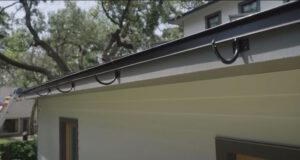 Steel gutters are one of the more popular choices for homeowners in Australia. They come pre-painted, which makes them very easy to install and maintain. Steel gutters are also very strong and durable, so they will last a long time when properly cared for.
Steel gutters are one of the more popular choices for homeowners in Australia. They come pre-painted, which makes them very easy to install and maintain. Steel gutters are also very strong and durable, so they will last a long time when properly cared for.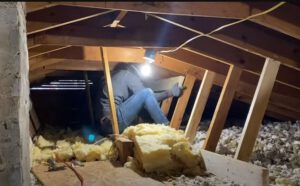 A sagging roof is a common problem that can occur in Australian homes. This issue is not only unsightly, but it can also compromise the structural integrity of the home and pose a safety risk to the occupants. In this article, we will explore how to identify and fix a sagging roof in an Australian home.
A sagging roof is a common problem that can occur in Australian homes. This issue is not only unsightly, but it can also compromise the structural integrity of the home and pose a safety risk to the occupants. In this article, we will explore how to identify and fix a sagging roof in an Australian home.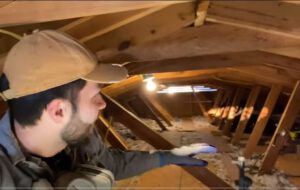 Prevention is key to avoiding a sagging roof in the future. Regular inspection and maintenance can help identify potential issues before they become major problems. Be sure to inspect your roof at least twice a year, after heavy rain or wind, and after any construction work on your home.
Prevention is key to avoiding a sagging roof in the future. Regular inspection and maintenance can help identify potential issues before they become major problems. Be sure to inspect your roof at least twice a year, after heavy rain or wind, and after any construction work on your home.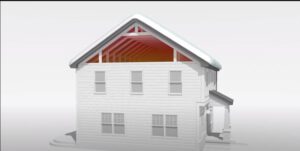 Proper ventilation is crucial for maintaining a healthy and functional attic space in Australia. Inadequate ventilation can lead to a buildup of heat, moisture, and pollutants, causing various issues such as mold growth, poor air quality, and structural damage. To ensure the longevity and usability of your attic space, it is essential to implement effective ventilation strategies. In this article, we will explore the key considerations and methods to ensure proper ventilation in your Australian attic space.
Proper ventilation is crucial for maintaining a healthy and functional attic space in Australia. Inadequate ventilation can lead to a buildup of heat, moisture, and pollutants, causing various issues such as mold growth, poor air quality, and structural damage. To ensure the longevity and usability of your attic space, it is essential to implement effective ventilation strategies. In this article, we will explore the key considerations and methods to ensure proper ventilation in your Australian attic space.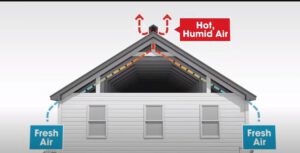 In certain cases, especially in areas with limited natural ventilation or excessive heat buildup, attic fans can be installed to improve airflow. Attic fans, powered by electricity or solar energy, help expel hot air and promote air exchange. They can be used as exhaust fans or in combination with intake vents to enhance ventilation effectiveness. However, it is important to properly size and position attic fans for optimal performance.
In certain cases, especially in areas with limited natural ventilation or excessive heat buildup, attic fans can be installed to improve airflow. Attic fans, powered by electricity or solar energy, help expel hot air and promote air exchange. They can be used as exhaust fans or in combination with intake vents to enhance ventilation effectiveness. However, it is important to properly size and position attic fans for optimal performance.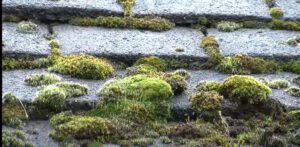 Moss and algae growth on the roof is a common issue faced by many homeowners in Australia. While they may seem harmless at first, if left untreated, these organisms can cause significant damage, leading to expensive repairs or even a full roof replacement. This article offers in-depth guidance on how to prevent moss and algae growth on your Australian roof. We will delve into understanding what causes this growth, prevention methods, appropriate cleaning techniques, and long-term maintenance strategies.
Moss and algae growth on the roof is a common issue faced by many homeowners in Australia. While they may seem harmless at first, if left untreated, these organisms can cause significant damage, leading to expensive repairs or even a full roof replacement. This article offers in-depth guidance on how to prevent moss and algae growth on your Australian roof. We will delve into understanding what causes this growth, prevention methods, appropriate cleaning techniques, and long-term maintenance strategies.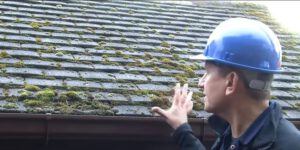 If your roof already has moss or algae, don’t worry. There are several cleaning methods available, both chemical and non-chemical.
If your roof already has moss or algae, don’t worry. There are several cleaning methods available, both chemical and non-chemical.